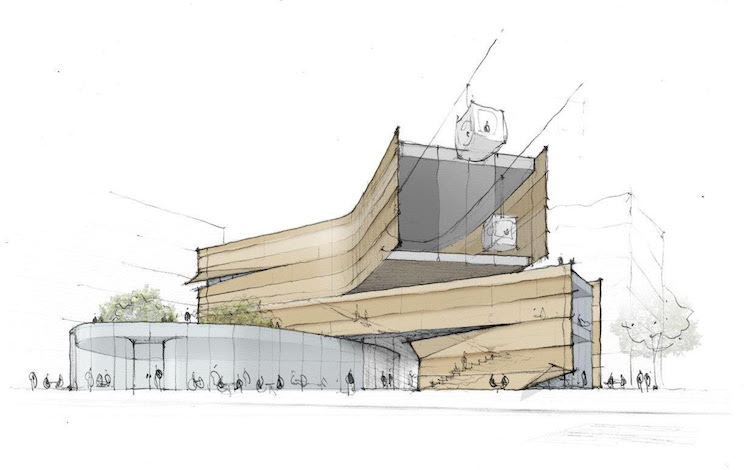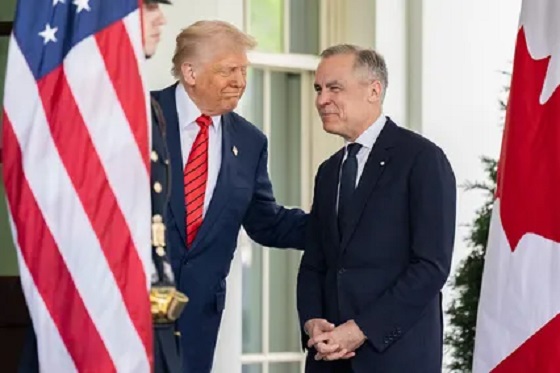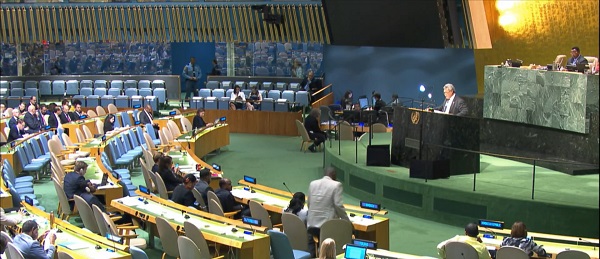Business
Edmonton company pitching 25 million dollar gondola project connecting Capstone with Bower Ponds

News release from Prairie Sky Gondola
Prairie Sky Gondola Bringing Unique Gondola Opportunity to Red Deer
Red Deer set to embrace trailblazing technology and a one-of-a-kind community tourism attraction in central Alberta
Prairie Sky Gondola announced today its intention to build an urban ropeway in Red Deer.
“Some cities don’t know how to react to unique ideas. Red Deer clearly is not one of those cities.” remarked Prairie Sky Gondola President Jeffrey Hansen-Carlson. “Red Deer is arguably one of the best communities in Alberta to invest in today. We are excited to have gotten to this moment but we are also inspired by the work that’s ahead of us. Talking about ideas is one thing. Doing them is another. And, the doing part is our business.”
Prairie Sky Gondola brought forward an unsolicited proposal to The City of Red Deer eight months ago and has been working with The City to assess and plan for the project. A Memorandum of Understanding, or MOU, will be signed this Spring, initiating the process to collaboratively undertake additional technical and commercial due diligence.
This ropeway, with an investment valued at over $25M, will be located in an inventive community development called Capstone. Connecting the river to Red Deer, Capstone’s ambition is to create something different—something vibrant, energetic, and inquisitive for socially engaged and physically active Albertans wanting to live within hours of Calgary and Edmonton, Alberta’s two largest cities.

“The City’s vision, investment, and work on Capstone served as a critical catalyst for Prairie Sky Gondola’s decision to move forward as they reviewed this site,” announced Tara Lodewyk, Interim City Manager. “This, matched with the City’s openness and willingness to welcome experienced, private investment, have culminated to provide this unique proposed opportunity in Red Deer.”
The proposed ropeway is a 350 meter, two station pulse gondola over the Red Deer River connecting Capstone to Bower Ponds recreation area. Flying over the Red Deer River, residents and visitors alike will get stunning views all day long, easily accessing all that downtown Red Deer and Bower Ponds has to offer. The Capstone Station will include dining and other experiential elements. The stations will enhance access to communities while seamlessly integrating within the landscapes of both sides of the river.

“The concept is to make the two stations as opposite as possible. What we have proposed is not necessarily intuitive,” commented Jeffrey Hansen-Carlson. “Capstone Station is sweeping and bold. Bower Ponds Station wants to be invisible. The development concept fires up the City’s vision while complementing the values of the community.’ And Mayor Ken Johnston agrees, “This project will highlight the natural beauty in our community while creating an attraction and destination in the heart of Capstone. The gondola will be an added tourism destination, the success of which will extend to local businesses and inspire further development.”
Keep your eyes open for future project details, timelines, and an upcoming naming competition!
About Prairie Sky Gondola
Prairie Sky Gondola Inc. is an urban ropeway developer based in Edmonton, Alberta. Prairie Sky is actively pursuing opportunities to advance the use of modern ropeway technology to create value for growing communities in Canada.
Business
Trump confirms 35% tariff on Canada, warns more could come

Quick Hit:
President Trump on Thursday confirmed a sweeping new 35% tariff on Canadian imports starting August 1, citing Canada’s failure to curb fentanyl trafficking and retaliatory trade actions.
Key Details:
- In a letter to Canadian Prime Minister Mark Carney, Trump said the new 35% levy is in response to Canada’s “financial retaliation” and its inability to stop fentanyl from reaching the U.S.
- Trump emphasized that Canadian businesses that relocate manufacturing to the U.S. will be exempt and promised expedited approvals for such moves.
- The administration has already notified 23 countries of impending tariffs following the expiration of a 90-day negotiation window under Trump’s “Liberation Day” trade policy.
Diving Deeper:
President Trump escalated his tariff strategy on Thursday, formally announcing a 35% duty on all Canadian imports effective August 1. The move follows what Trump described as a breakdown in trade cooperation and a failure by Canada to address its role in the U.S. fentanyl crisis.
“It is a Great Honor for me to send you this letter in that it demonstrates the strength and commitment of our Trading Relationship,” Trump wrote to Prime Minister Mark Carney. He added that the tariff response comes after Canada “financially retaliated” against the U.S. rather than working to resolve the flow of fentanyl across the northern border.
Trump’s letter made clear the tariff will apply broadly, separate from any existing sector-specific levies, and included a warning that “goods transshipped to evade this higher Tariff will be subject to that higher Tariff.” The president also hinted that further retaliation from Canada could push rates even higher.
However, Trump left the door open for possible revisions. “If Canada works with me to stop the flow of Fentanyl, we will, perhaps, consider an adjustment to this letter,” he said, adding that tariffs “may be modified, upward or downward, depending on our relationship.”
Canadian companies that move operations to the U.S. would be exempt, Trump said, noting his administration “will do everything possible to get approvals quickly, professionally, and routinely — In other words, in a matter of weeks.”
The U.S. traded over $762 billion in goods with Canada in 2024, with a trade deficit of $63.3 billion, a figure Trump called a “major threat” to both the economy and national security.
Speaking with NBC News on Thursday, Trump suggested even broader tariff hikes are coming, floating the idea of a 15% or 20% blanket rate on all imports. “We’re just going to say all of the remaining countries are going to pay,” he told Meet the Press moderator Kristen Welker, adding that “the tariffs have been very well-received” and noting that the stock market had hit new highs that day.
The Canadian announcement is part of a broader global tariff rollout. In recent days, Trump has notified at least 23 countries of new levies and revealed a separate 50% tariff on copper imports.
“Not everybody has to get a letter,” Trump said when asked if other leaders would be formally notified. “You know that. We’re just setting our tariffs.”
Business
Trump slaps Brazil with tariffs over social media censorship

From LifeSiteNews
By Dan Frieth
In his letter dated July 9, 2025, addressed to President Luiz Inácio Lula da Silva, Trump ties new U.S. trade measures directly to Brazilian censorship.
U.S. President Donald Trump has launched a fierce rebuke of Brazil’s moves to silence American-run social media platforms, particularly Rumble and X.
In his letter dated July 9, 2025, addressed to President Luiz Inácio Lula da Silva, Trump ties new U.S. trade measures directly to Brazilian censorship.
He calls attention to “SECRET and UNLAWFUL Censorship Orders to U.S. Social Media platforms,” pointing out that Brazil’s Supreme Court has been “threatening them with Millions of Dollars in Fines and Eviction from the Brazilian Social Media market.”


Trump warns that these actions are “due in part to Brazil’s insidious attacks on Free Elections, and the fundamental Free Speech Rights of Americans,” and states: “starting on August 1, 2025, we will charge Brazil a Tariff of 50% on any and all Brazilian products sent into the United States, separate from all Sectoral Tariffs.” He also adds that “Goods transshipped to evade this 50% Tariff will be subject to that higher Tariff.”
Brazil’s crackdown has targeted Rumble after it refused to comply with orders to block the account of Allan dos Santos, a Brazilian streamer living in the United States.
On February 21, 2025, Justice Alexandre de Moraes ordered Rumble’s suspension for non‑compliance, saying it failed “to comply with court orders.”
Earlier, from August to October 2024, Moraes had similarly ordered a nationwide block on X.
The court directed ISPs to suspend access and imposed fines after the platform refused to designate a legal representative and remove certain accounts.
Elon Musk responded: “Free speech is the bedrock of democracy and an unelected pseudo‑judge in Brazil is destroying it for political purposes.”
By linking censorship actions, particularly those targeting Rumble and X, to U.S. trade policy, Trump’s letter asserts that Brazil’s judiciary has moved into the arena of foreign policy and economic consequences.
The tariffs, he makes clear, are meant, at least in part, as a response to Brazil’s suppression of American free speech.
Trump’s decision to impose tariffs on Brazil for censoring American platforms may also serve as a clear signal to the European Union, which is advancing similar regulatory efforts under the guise of “disinformation” and “online safety.”
With the EU’s Digital Services Act and proposed “hate speech” legislation expanding government authority over content moderation, American companies face mounting pressure to comply with vague and sweeping takedown demands.
By framing censorship as a violation of U.S. free speech rights and linking it to trade consequences, Trump is effectively warning that any foreign attempt to suppress American voices or platforms could trigger similar economic retaliation.
Reprinted with permission from Reclaim The Net.
-

 Also Interesting2 days ago
Also Interesting2 days ago9 Things You Should Know About PK/PD in Drug Research
-

 Business2 days ago
Business2 days agoCannabis Legalization Is Starting to Look Like a Really Dumb Idea
-

 Bruce Dowbiggin2 days ago
Bruce Dowbiggin2 days agoThe Covid 19 Disaster: When Do We Get The Apologies?
-

 Media2 days ago
Media2 days agoCBC journalist quits, accuses outlet of anti-Conservative bias and censorship
-

 Business2 days ago
Business2 days agoCarney government should recognize that private sector drives Canada’s economy
-

 Alberta2 days ago
Alberta2 days agoFourteen regional advisory councils will shape health care planning and delivery in Alberta
-

 Alberta1 day ago
Alberta1 day agoAlberta school boards required to meet new standards for school library materials with regard to sexual content
-

 Business1 day ago
Business1 day agoUN’s ‘Plastics Treaty’ Sports A Junk Science Wrapper





